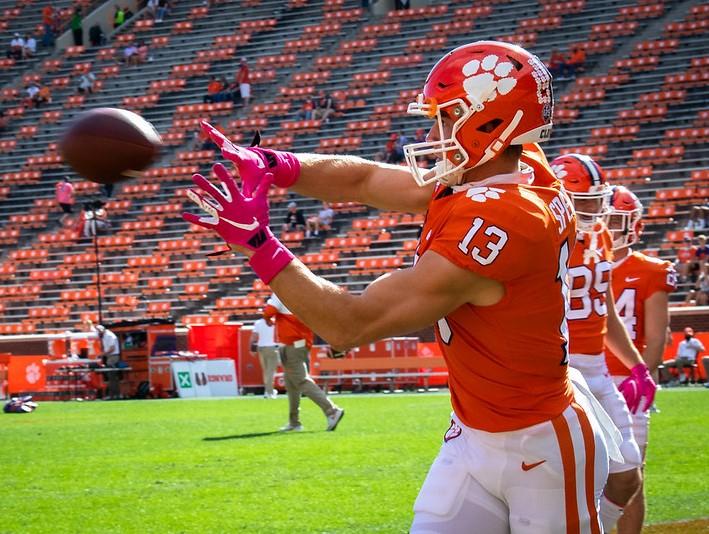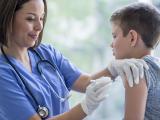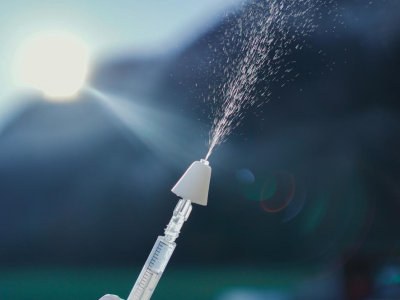A new study finds that 528 National Football League (NFL) and National Collegiate Athletic Association (NCAA) football games with limited in-person attendance during the 2020-21 season weren't linked to increased community COVID-19 cases, and another shows that 74% of NCAA men's basketball spectators correctly wore face coverings.
Role of public health measures, outdoor settings
In the first study, published today in JAMA Network Open, a team led by Massachusetts General Hospital researchers compared county-level COVID-19 spread after fan-attended NFL and NCAA games with COVID-19 transmission in counties that didn't host a game the same day but had hosted the same number of games—without any fans—in the 14 days leading up to it.
Across 101 NFL games, the median attendance was 9,949, while median attendance at the 427 NCAA games wasn't available and thus was recorded as a binary variable. Median daily new COVID-19 cases in counties hosting fan-attended games was 26.14 per 100,000 on game day, compared with 24.11 in the 361 control counties.
The average treatment effect in the 14 days after a game was 1.21 cases per 100,000 residents, with the daily treatment effect staying close to this level during this time.
"We surmise that the NFL and NCAA policies regarding limited in-person attendance, mask use, and social and physical distancing measures in stadiums was not associated with substantially higher community spread of COVID-19," the study authors wrote. "Additionally, an important number of NFL and NCAA football stadiums are outdoors or have a retractable roof, which could have had an impact on mitigating spread."
The authors say the study results may help sports leagues decide how to best proceed with future games, although research into potential coronavirus spread to adjacent counties is needed.
"Our study provides evidence suggesting that in-person attendance of football games with social distancing and mask use could be resumed in the 2021 to 2022 season," they wrote. "However, it is worth noting that newly emerging variants of SARS-CoV-2 have less predictable implications at this point and might lead to more disruptive interruptions in the future."
Situation in 'constant evolution'
In a commentary in the same journal, Michael Rubin, MD, PhD, of the VA Salt Lake City Health Care System, said that while the results are encouraging, they should be considered in light of the study limitations. For example, because the researchers had to use a binary value for attendance at NCAA games, they couldn't precisely measure how the number or concentration of fans affected COVID-19 spread.
Rubin said other confounding factors (eg, other gatherings that may have occurred in the counties) could have biased the data. Also, the results can't be generalized to indoor events held by leagues such as the National Basketball Association and the National Hockey League because many NFL and NCAA football games are held outdoors.
"While the use of isolation zones or bubbles has proven to be effective at preventing outbreaks of COVID-19 among players, staff, and referees, the evidence to support different approaches to protect the safety of in-person spectators is scant," he wrote, adding that the public health situation around major sporting events is in "constant evolution."
While studies such as this one are important for decision-makers in protecting communities, Rubin said, more evidence is required. "More like it are needed as the United States and other countries confront the mounting political and societal pressure of regaining a sense of normalcy that comes with returning our large and beloved sports arenas to full—and full-throated—capacity," he concluded.
Proper mask wearing still lacking
The second study, led by Indiana University researchers and published yesterday in JAMA, assessed the proper wearing of face coverings by spectators at the 2021 NCAA Division I men's basketball tournament in Indianapolis from Mar 30 to Apr 5. Proper mask usage, as defined by the Centers for Disease Control and Prevention, includes placing a cloth face covering or disposable surgical mask over the mouth, nose (including the nostrils), and chin.
Seating at the large indoor stadium during the five games was limited to 22%, and the venue, county, and state all required the use of masks. In addition, signs and announcements promoted wearing masks, physical distancing, and leaving seats empty between groups, and ushers enforced compliance.
Several times during each game, six trained observers counted masking behavior in all fans 2 years and older at entrances, concession areas, arena and upper-deck seating, and exits.
Of 21,355 observations, 73.9% of spectators correctly wore a mask (81.3% of females and 69.8% of males). Mask compliance was lowest in arena and upper-deck seating (66.7% and 34.5%, respectively). The highest compliance occurred in concession areas and at entrances (83.3% and 80.3%, respectively).
The authors noted that the overall estimate of mask compliance was below the 80% level recommended to reduce COVID-19 transmission. The variation in mask wearing, they said, could be the result of differences in enforcement (eg, ushers couldn't visit the upper decks as often because of space limitations, but spectators had to pass staff at entrances and concession areas). Also, seated spectators may have removed their masks to eat, drink, or cheer and may have felt less vulnerable to infection when sitting with members of their own group.
While the study took place when COVID-19 mitigation protocols were near ubiquitous and before vaccines were broadly available in the United States, it still provides insight on masking behavior at a mass indoor event, the researchers say.
They conclude, "When vaccinations are not available or coverage is low, ensuring adherence to key transmission mitigation strategies such as mask wearing during mass events is critical during the current, and any future, pandemic."




















